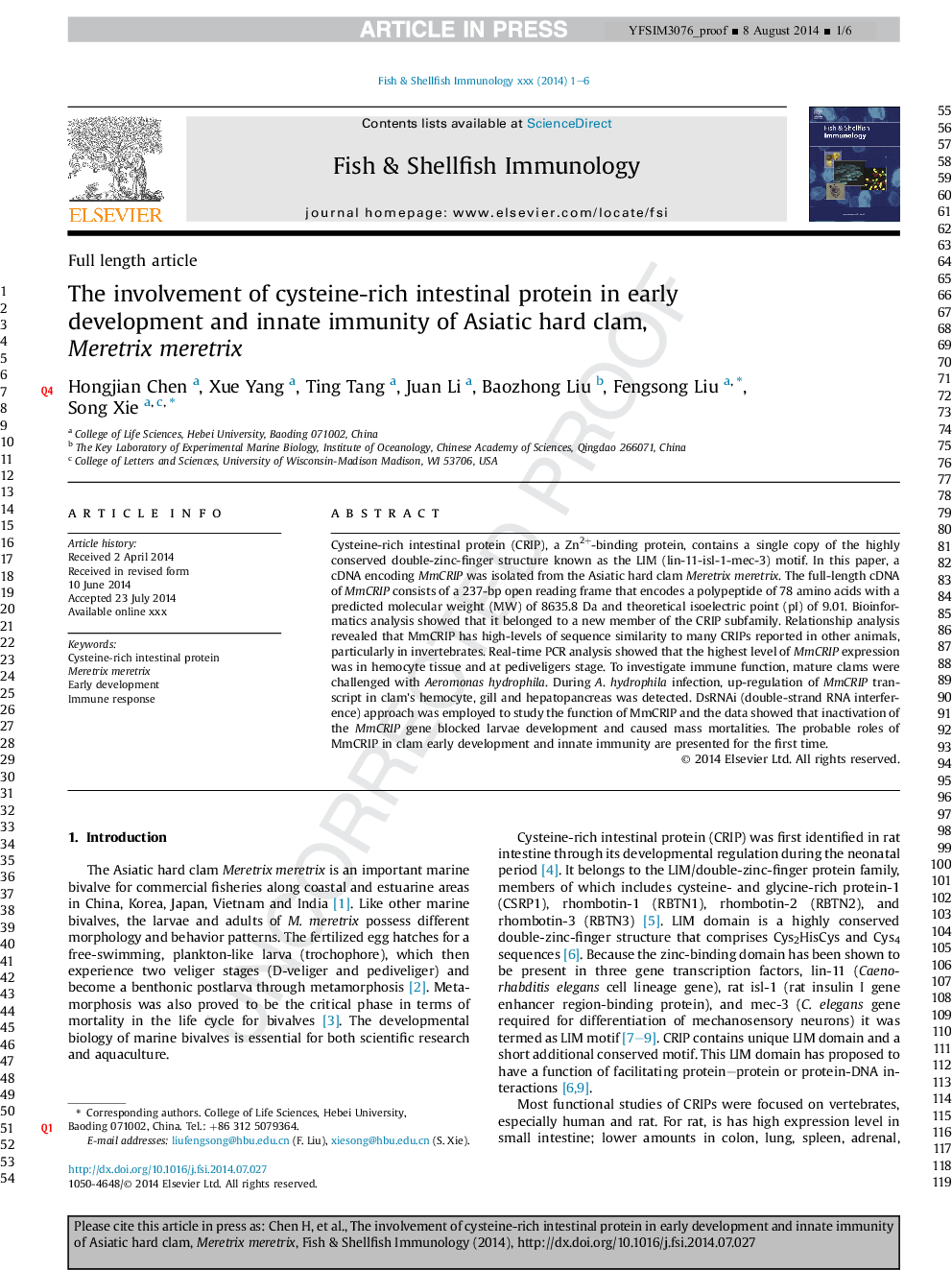| Article ID | Journal | Published Year | Pages | File Type |
|---|---|---|---|---|
| 8499560 | Fish & Shellfish Immunology | 2014 | 6 Pages |
Abstract
Cysteine-rich intestinal protein (CRIP), a Zn2+-binding protein, contains a single copy of the highly conserved double-zinc-finger structure known as the LIM (lin-11-isl-1-mec-3) motif. In this paper, a cDNA encoding MmCRIP was isolated from the Asiatic hard clam Meretrix meretrix. The full-length cDNA of MmCRIP consists of a 237-bp open reading frame that encodes a polypeptide of 78 amino acids with a predicted molecular weight (MW) of 8635.8Â Da and theoretical isoelectric point (pI) of 9.01. Bioinformatics analysis showed that it belonged to a new member of the CRIP subfamily. Relationship analysis revealed that MmCRIP has high-levels of sequence similarity to many CRIPs reported in other animals, particularly in invertebrates. Real-time PCR analysis showed that the highest level of MmCRIP expression was in hemocyte tissue and at pediveligers stage. To investigate immune function, mature clams were challenged with Aeromonas hydrophila. During A. hydrophila infection, up-regulation of MmCRIP transcript in clam's hemocyte, gill and hepatopancreas was detected. DsRNAi (double-strand RNA interference) approach was employed to study the function of MmCRIP and the data showed that inactivation of the MmCRIP gene blocked larvae development and caused mass mortalities. The probable roles of MmCRIP in clam early development and innate immunity are presented for the first time.
Related Topics
Life Sciences
Agricultural and Biological Sciences
Aquatic Science
Authors
Hongjian Chen, Xue Yang, Ting Tang, Juan Li, Baozhong Liu, Fengsong Liu, Song Xie,
